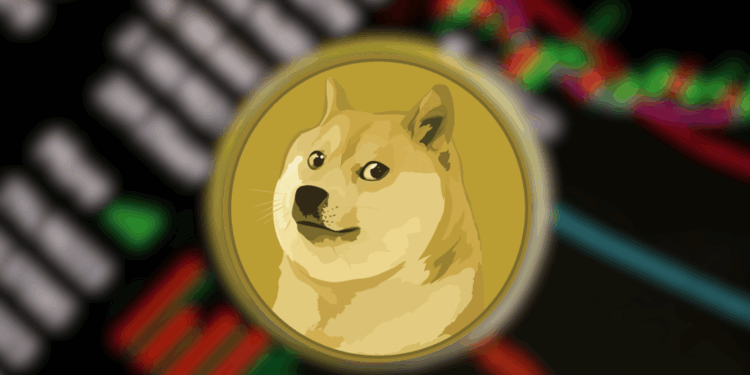- Dogecoin is a meme-born, community-powered currency built for speed and simplicity.
- Its unlimited supply and low fees make it ideal for tipping, payments, and small transfers.
- A $1 price in 2025 is possible—but would likely need a major retail surge or Musk-level catalyst.
Dogecoin, one of the OG memecoins, has been a chaotic, culture-driven force in the crypto market. Born of humor, crowned by community, and propelled by celebrity tweets, Dogecoin has defied the norms of digital assets time and time again.
It is also important to highlight that while markets rise and fall, Dogecoin has managed to stay culturally relevant and surprisingly functional. And as a new wave of retail traders and crypto enthusiasts enter the digital asset space, Dogecoin continues to command attention. So, let us take a closer look at what this unpredictable asset really is, what makes it stand out, and why, despite its meme origins, it continues to matter.
What Is Dogecoin?
Dogecoin is a decentralized, peer-to-peer digital currency launched on December 6, 2013, by software engineers Billy Markus and Jackson Palmer. Inspired by the viral Doge meme — featuring a bewildered-looking Shiba Inu — it was originally meant to poke fun at the hype-driven, speculative culture surrounding early cryptocurrencies like Bitcoin.
Functionally, Dogecoin operates as a payment cryptocurrency that allows users to send funds across the internet without intermediaries. Built on blockchain technology, every transaction is recorded on a distributed ledger, verified by a decentralized network of miners. It uses a proof-of-work mechanism similar to Bitcoin, but with notable differences that prioritize speed, accessibility, and ease of use.
Over the years, what started as a joke steadily transformed into a legitimate digital asset, buoyed by a relentless online community and high-profile endorsements. It now ranks among the top cryptocurrencies by market capitalization and remains a staple of the crypto conversation.
What Makes It Unique?
While many projects strive to become the next financial infrastructure layer or decentralized internet platform, Dogecoin thrives on simplicity and cultural capital.
From the beginning, Dogecoin’s lighthearted brand identity has made it one of the most approachable cryptocurrencies for everyday users. Its community-focused ethos and meme-fueled appeal have enabled it to build a loyal following without relying on technical complexity or institutional buy-in.
Technically, it runs on the Scrypt algorithm, a memory-intensive proof-of-work system designed to be more accessible to regular computer hardware — at least at launch. This set it apart from Bitcoin’s increasingly industrialized mining ecosystem. It also processes blocks roughly every minute, compared to Bitcoin’s ten minutes, allowing for quicker transactions and minimal fees.
But what truly defines Dogecoin is its memetic power. The ability to capture collective internet attention, rally grassroots movements, and mobilize communities around absurd ideas has kept it alive far longer than any sober financial model would predict.
And then there is Elon Musk. His Twitter antics have turned Dogecoin into a market-moving force. From Saturday Night Live references to dreams of using it on Mars, Dogecoin became mainstream largely through Musk’s provocations. His influence helped pump Doge into the top ten coins by market cap and ensured it stayed there long after the hype cooled.
$DOGE and Its Tokenomics
Dogecoin’s economics are fundamentally different from Bitcoin’s hard-cap model. Originally planned to have a supply cap of 100 billion coins, that limit was removed in 2014. Now, Dogecoin has no maximum supply. Every minute, 10,000 new DOGE are mined. That adds up to approximately 5.26 billion DOGE per year. This steady inflationary issuance means Dogecoin is designed to be spent and circulated rather than hoarded as a store of value.
This continuous minting helps keep transaction fees low and supports fast processing times, reinforcing Dogecoin’s role as a practical, spendable currency rather than a speculative asset. Its inflationary nature discourages hoarding by removing the incentive of dramatic scarcity-driven price jumps. For everyday users, this means Dogecoin feels more like digital cash—usable and accessible, not a locked-away treasure.
The token’s low unit price also plays a psychological role. Newcomers find it easier to engage with Dogecoin because owning thousands or millions of tokens feels more tangible than fractions of a Bitcoin. This accessibility has been critical in building and maintaining an enthusiastic, grassroots community that continues to drive Dogecoin’s cultural momentum.
Current and Potential Use Cases
Dogecoin’s unique blend of speed, low transaction costs, and community-driven momentum has enabled it to carve out a number of practical use cases that many other cryptocurrencies struggle to deliver. This includes:
Online Tipping
From its early days, Dogecoin found a natural role as the currency for digital tipping and small-scale rewards. Its fast transaction confirmations and near-negligible fees made it the perfect tool for rewarding content creators and community contributors on platforms like Reddit and Twitter. Unlike Bitcoin or Ethereum, where transaction costs can often outpace the tip itself, Dogecoin thrives in these microtransactions, empowering users to show appreciation instantly without friction.
Microtransactions
In a landscape where transaction fees often make small payments impractical, Dogecoin stands out with its ability to process microtransactions efficiently. This opens doors for applications such as online gaming, digital goods, and micropayments within apps—areas that demand quick and cost-effective transfers. Dogecoin’s block time of about one minute and minimal fees allow for real-world utility that goes beyond speculative trading, supporting business models that depend on frequent, small payments.
Charity and Crowdfunding
Dogecoin’s community has repeatedly demonstrated its ability to mobilize resources for philanthropic efforts and crowdfunding campaigns. From sponsoring athletes to funding humanitarian projects, Dogecoin has channeled collective enthusiasm into tangible social impact.
Remittances
International money transfers are notorious for their expense and delay. Dogecoin’s decentralized blockchain network offers a faster, cheaper alternative for peer-to-peer remittances, eliminating many traditional friction points.
Retail Payments
What started as a novelty has steadily gained ground with merchants. From gaming platforms like Playhub Casino to retail giants like GameStop, AMC, and numerous Shopify stores, Dogecoin is finding its way into everyday commerce.
Education and Onboarding
Dogecoin makes crypto less intimidating. With its meme roots and friendly vibe, it is often the first coin newcomers explore. It serves as an onboarding tool for people learning about wallets, blockchain, and digital payments.
Key Milestones and Highlights
Dogecoin’s journey has been anything but ordinary. From its modest origins to becoming a cultural phenomenon and serious player in the crypto ecosystem, these milestones mark some of its most defining moments:
- 2013 Launch – Dogecoin started as a fun parody using the Shiba Inu meme, poking fun at serious cryptocurrencies like Bitcoin.
- Community Growth – Quickly embraced on Reddit and Twitter, Dogecoin became the favorite coin for tipping and rewarding online content creators.
- 2014 Philanthropy – The community raised funds to support the Jamaican bobsled team and clean water projects, showing real-world impact.
- Real Currency – Dogecoin evolved into a practical digital currency, ideal for microtransactions and everyday online tipping due to low fees.
- Celebrity Boost – Elon Musk’s tweets propelled Dogecoin into mainstream awareness, sparking massive retail investor interest and market surges.
- 2021 Surge – Social media hype pushed Dogecoin’s market cap past $80 billion, placing it among the world’s largest cryptocurrencies.
- Merchant Adoption – Increasingly accepted by merchants like GameStop and AMC, Dogecoin gained real-world utility as a payment method.
- Tech & Community – Simple yet secure protocol updates keep Dogecoin reliable, backed by an active, passionate global community.
Roadmap and Plans Ahead
Dogecoin’s future is less about complex DeFi schemes and more about refining what it already does well — fast, cheap, no-nonsense digital cash. The dev team, though intentionally lean and community-led, has outlined a few key priorities to keep Dogecoin relevant and functional:
- Core Upgrades – Ongoing improvements to transaction efficiency, security, and wallet functionality without bloating the protocol.
- Interoperability – Integrating Dogecoin more easily with bridges, exchanges, and layer-2 solutions for smoother cross-chain activity and cheaper swaps.
- Community Tools – Supporting third-party projects that expand Dogecoin’s use cases — tipping bots, merchant plugins, and micropayment services.
- Merchant Adoption – Continuing to lower the technical barrier for businesses to accept $DOGE with simple, plug-and-play payment options.
Final Thoughts
In conclusion, Dogecoin has proven that a digital asset does not need to follow traditional playbooks to matter. What began as a meme has grown into a functional, community-driven currency with a loyal following and real-world utility. Its simplicity, accessibility, and cultural momentum have kept it relevant in a fast-moving, often unforgiving market.
So, as new users and retail traders continue to explore crypto, Dogecoin’s approachable vibe and practical use cases position it as more than a curiosity — it is a reminder that in crypto, the crowd still has power, and sometimes the joke coin has the last laugh.














